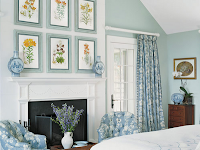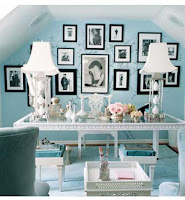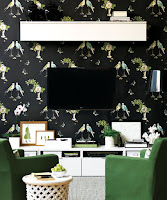While it would be difficult to tell you all you need to know on the various choices of flooring in one article, I wanted to hit some key points for various flooring options available today to allow you to make an educated choice. I’m a “carpet-free” believer, so have focused on bringing you information on hardwood floors, as well as some great hardwood alternatives.
 Cork Flooring is made from the bark of the cork oak series. The bark naturally re-grows and can be harvested again in 9-12 years without any harm to the trees. It provides great sound and heat insulation, and is naturally resistant to mould, mildew and bacteria. It is incredibly durable, and very compressible and elastic, meaning that if dented, it will often regain shape once the pressure is released. Cork is considered one of the comfortable most flooring options available. It has a unique cellular structure, with millions of cells enclosed with a gaseous substance. It gives a soft feeling to the feet and joints of people walking and standing on cork floors for long.
Cork Flooring is made from the bark of the cork oak series. The bark naturally re-grows and can be harvested again in 9-12 years without any harm to the trees. It provides great sound and heat insulation, and is naturally resistant to mould, mildew and bacteria. It is incredibly durable, and very compressible and elastic, meaning that if dented, it will often regain shape once the pressure is released. Cork is considered one of the comfortable most flooring options available. It has a unique cellular structure, with millions of cells enclosed with a gaseous substance. It gives a soft feeling to the feet and joints of people walking and standing on cork floors for long.
 Bamboo Flooring has attracted a lot of attention over the last several years as bamboo is a rapidly renewed resource that is generally grown without the use of pesticides or other harmful chemicals. These floors can be very durable and long-lasting, and come in a variety of styles, similar to hardwood. There are some cautions when it comes to bamboo though. Be sure to look for a mature bamboo, such as Moso which is harvested after 5 years. As well, to prevent warping look for a kiln-dried bamboo to ensure a low moisture content.
Bamboo Flooring has attracted a lot of attention over the last several years as bamboo is a rapidly renewed resource that is generally grown without the use of pesticides or other harmful chemicals. These floors can be very durable and long-lasting, and come in a variety of styles, similar to hardwood. There are some cautions when it comes to bamboo though. Be sure to look for a mature bamboo, such as Moso which is harvested after 5 years. As well, to prevent warping look for a kiln-dried bamboo to ensure a low moisture content.
 Leather Flooring, while once reserved for the rich and famous, is now quite economical, in addition to being eco-friendly. Eco-engineering has made it possible to create beautiful, durable leather flooring that is environmentally friendly and sustainable with an innovative use of recycled leather. Torly’s Leather has been a leader in this field, and backs their leather floors with a 25 year warranty. Torly’s leather floors contain no harmful VOC emissions, no added formaldehyde and exceed California Indoor Air Quality standards, giving you a healthier home.
Leather Flooring, while once reserved for the rich and famous, is now quite economical, in addition to being eco-friendly. Eco-engineering has made it possible to create beautiful, durable leather flooring that is environmentally friendly and sustainable with an innovative use of recycled leather. Torly’s Leather has been a leader in this field, and backs their leather floors with a 25 year warranty. Torly’s leather floors contain no harmful VOC emissions, no added formaldehyde and exceed California Indoor Air Quality standards, giving you a healthier home.
 Hardwood Flooring today is available in a great variety of styles, widths, and colours. Always a classic choice, today’s hardwood floors are easier to install and easier to care for than ever. Hardwood floors can still fade due to direct sunlight, and can scratch fairly easily. They generally need to be refinished every several years, but can last for the life of the home.
Hardwood Flooring today is available in a great variety of styles, widths, and colours. Always a classic choice, today’s hardwood floors are easier to install and easier to care for than ever. Hardwood floors can still fade due to direct sunlight, and can scratch fairly easily. They generally need to be refinished every several years, but can last for the life of the home.
 Laminate Flooring is a much less expensive alternative to any of the other floors mentioned in this article. It is scratch, fade, impact, and stain resistant, and is very easy to care for. These floors give the look of hardwood, for a fraction of the cost, and can be installed almost anywhere in the home. While they never need to be refinished, their life expectancy is generally less than 20 years. Be sure to keep this in mind when choosing to install in your home.
Laminate Flooring is a much less expensive alternative to any of the other floors mentioned in this article. It is scratch, fade, impact, and stain resistant, and is very easy to care for. These floors give the look of hardwood, for a fraction of the cost, and can be installed almost anywhere in the home. While they never need to be refinished, their life expectancy is generally less than 20 years. Be sure to keep this in mind when choosing to install in your home.
Written by Shauna Lynn, Beyond The Stage Homes
www.beyondthestagehomes.com
 Cork Flooring is made from the bark of the cork oak series. The bark naturally re-grows and can be harvested again in 9-12 years without any harm to the trees. It provides great sound and heat insulation, and is naturally resistant to mould, mildew and bacteria. It is incredibly durable, and very compressible and elastic, meaning that if dented, it will often regain shape once the pressure is released. Cork is considered one of the comfortable most flooring options available. It has a unique cellular structure, with millions of cells enclosed with a gaseous substance. It gives a soft feeling to the feet and joints of people walking and standing on cork floors for long.
Cork Flooring is made from the bark of the cork oak series. The bark naturally re-grows and can be harvested again in 9-12 years without any harm to the trees. It provides great sound and heat insulation, and is naturally resistant to mould, mildew and bacteria. It is incredibly durable, and very compressible and elastic, meaning that if dented, it will often regain shape once the pressure is released. Cork is considered one of the comfortable most flooring options available. It has a unique cellular structure, with millions of cells enclosed with a gaseous substance. It gives a soft feeling to the feet and joints of people walking and standing on cork floors for long. Bamboo Flooring has attracted a lot of attention over the last several years as bamboo is a rapidly renewed resource that is generally grown without the use of pesticides or other harmful chemicals. These floors can be very durable and long-lasting, and come in a variety of styles, similar to hardwood. There are some cautions when it comes to bamboo though. Be sure to look for a mature bamboo, such as Moso which is harvested after 5 years. As well, to prevent warping look for a kiln-dried bamboo to ensure a low moisture content.
Bamboo Flooring has attracted a lot of attention over the last several years as bamboo is a rapidly renewed resource that is generally grown without the use of pesticides or other harmful chemicals. These floors can be very durable and long-lasting, and come in a variety of styles, similar to hardwood. There are some cautions when it comes to bamboo though. Be sure to look for a mature bamboo, such as Moso which is harvested after 5 years. As well, to prevent warping look for a kiln-dried bamboo to ensure a low moisture content. Leather Flooring, while once reserved for the rich and famous, is now quite economical, in addition to being eco-friendly. Eco-engineering has made it possible to create beautiful, durable leather flooring that is environmentally friendly and sustainable with an innovative use of recycled leather. Torly’s Leather has been a leader in this field, and backs their leather floors with a 25 year warranty. Torly’s leather floors contain no harmful VOC emissions, no added formaldehyde and exceed California Indoor Air Quality standards, giving you a healthier home.
Leather Flooring, while once reserved for the rich and famous, is now quite economical, in addition to being eco-friendly. Eco-engineering has made it possible to create beautiful, durable leather flooring that is environmentally friendly and sustainable with an innovative use of recycled leather. Torly’s Leather has been a leader in this field, and backs their leather floors with a 25 year warranty. Torly’s leather floors contain no harmful VOC emissions, no added formaldehyde and exceed California Indoor Air Quality standards, giving you a healthier home. Hardwood Flooring today is available in a great variety of styles, widths, and colours. Always a classic choice, today’s hardwood floors are easier to install and easier to care for than ever. Hardwood floors can still fade due to direct sunlight, and can scratch fairly easily. They generally need to be refinished every several years, but can last for the life of the home.
Hardwood Flooring today is available in a great variety of styles, widths, and colours. Always a classic choice, today’s hardwood floors are easier to install and easier to care for than ever. Hardwood floors can still fade due to direct sunlight, and can scratch fairly easily. They generally need to be refinished every several years, but can last for the life of the home. Laminate Flooring is a much less expensive alternative to any of the other floors mentioned in this article. It is scratch, fade, impact, and stain resistant, and is very easy to care for. These floors give the look of hardwood, for a fraction of the cost, and can be installed almost anywhere in the home. While they never need to be refinished, their life expectancy is generally less than 20 years. Be sure to keep this in mind when choosing to install in your home.
Laminate Flooring is a much less expensive alternative to any of the other floors mentioned in this article. It is scratch, fade, impact, and stain resistant, and is very easy to care for. These floors give the look of hardwood, for a fraction of the cost, and can be installed almost anywhere in the home. While they never need to be refinished, their life expectancy is generally less than 20 years. Be sure to keep this in mind when choosing to install in your home.Written by Shauna Lynn, Beyond The Stage Homes
www.beyondthestagehomes.com











